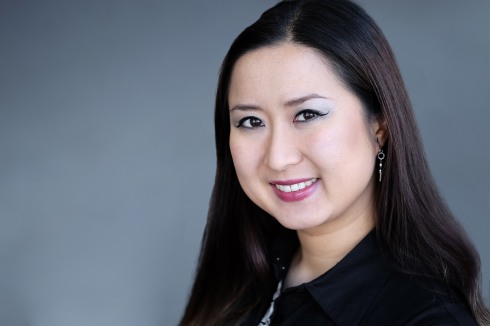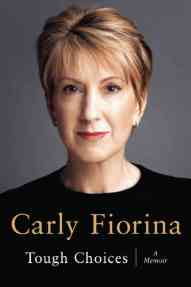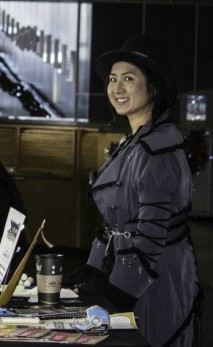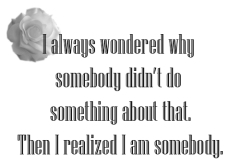This entry is part of a series of journals written for my MBA course on Leadership. I write these entries based on ideas introduced in class that stimulate me in some way (either as a need to respond, explore, share or reflect). As such, they may contain incomplete thought processes or be more rhetorical in nature. I have decided to share these entries with you, dear readers, with the hopes that you will gain something from them, and also help me with my own growth through forum.
It appears that in these last couple weeks of class we have regularly examined women in leadership, either by examining their situation and issues in general, or identifying women leaders (ie. Lisa Dawe and Carly Fiorina). As such, as I looked over my pencil notes (which are my own thoughts and responses to “official” class notes), I find myself increasingly reflecting and questioning certain ideas with regards to women in leadership.
It is, unfortunately, common knowledge that there is a huge shortage of women in positions of leadership (glass ceiling and glass cliff anyone?). What frustrates me is that whenever I state this to someone, the response I get is, “there are female leaders! Look at (insert name here).” It’s not that there AREN’T female leaders, it’s that there is SIGNIFICANTLY less female leaders than males. Data and statistics cannot lie, no matter how much we resist. I am hardly one who is satisfied with the situation either.
The upsetting part is that we, as women, are often nervous to speak up (myself included) on the issue for fear of being called “feminist”, and not in the good way. When discussing the issue of Carly Fiorina (who failed as a leader for HP), I felt the need to defend myself when I mentioned the possible issue of gender bias: “And the ever controversial issue that no one wants to talk about, the question I would have liked to ask the board is, ‘would you have treated Carly differently, given her leadership tactics, if she was a male?'” I felt rather irritated, at both society and myself, that I felt compelled to explain/apologize before saying my piece. Sheryl Sandberg, in her TED Talk Lean In, said how when she was approached to do a TED Talk about women in leadership, she hesitated because of the stigma of how no one would take her seriously anymore should she address such an issue. It even happens to the women at the top of the power chain.
Even more devastating to me, was when I learned from my professor about how women are often thrust into positions of leadership during a crisis (eg. a business going through a crash and burn, scandal, etc.), expected to carry the company through the crisis, and then fired at the end of the process, if they are not forced to resign by the end of it because they are tattooed with the company’s tarnished reputation. I can understand certain reasons as to why women are made to lead during a crisis – a female leader often adopts the social and relationship building model as opposed to strictly directive, and the image of a female leader can exude a more nurturing/maternal energy based on the mother archetype (not to say this is true to every case). However, what message are we sending with regards to women in leadership if we discard them or scapegoat them after the fires are all put out?

Recently, I find myself within a collective for professional theatre by women…
You know, for years I rejected the idea of feminism. The term, frankly, made me cringe. I am the oldest of four, and coming from a traditional Chinese family, I was raised as the male heir for 10 years of my life before my brother was born (my parents might deny this to their grave, but in adulthood, I’ve come to recognize the patterns). I was always a dominant and rather aggressive individual, and through my upbringing and extracurricular, I always identified with more “masculine” traits and activities than “girly” things. Oddly then, my first few projects as a professional performer after graduation all involved feminist explorations. These projects, in conjunction with some glaringly obvious acts of discrimination/stereotypes against me as I entered the workforce, opened my eyes a little bit more towards the rights of my gender, and made me revisit the concept of feminism (and perhaps I’ll elaborate more on my own experiences in later entries).
Back on the subject on how women are treated in positions of leadership. Another thing we discussed was about how Norway had implemented at policy that boards must consist of at least 40% women, and how the rapid implementation of the policy forced a lot of women who were not ready or properly trained into the positions. The legislation actually compromised the competency of the board; but guess where they would most likely point the finger of blame?
However, what provoked me was not the discussion of competency/incompetency, but rather the number. Why did Norway decide on 40%? Why not 50%? If the nation was indeed seeking to improve the rights of women, why not create an equal division of power? To decide on 40% as a number instead of an even split appears to reinforce the marginalization in some way. It may not have even been deliberate, but the critical part of my brain certainly noticed, and I’m wondering if anyone else had as well.
The numbers matter. And they matter even more when it’s a conscious choice made by an entity or organization. We unfortunately have no macro control over the stats of women in leadership positions (lest some idealistic international legislation is implemented). But when someone says, “Let’s decide to allow 40% of a board to consist of women; not 50%, which would be an equal split, but 40%,”‘ it’s no different than when a film casts one ethnic character for that “token” role, all in the name of “diversity”.
After all of this, rather unexpectedly, I found myself drafting the proposal for my online group topic discussion as thus:
The culture of women in leadership – barriers, expectations and performance
I would like to examine how history, pop culture and societal norms affect women, and more specifically ethnic women, in positions of leadership, and also generate a path forward from the discussion and feedback. Since beginning my MBA, there are often discussions about women as leaders, or ethnic minorities as leaders; however, there hardly appears to be any examination on the situation of leaders who are both a woman and of ethnic minority.
Sheryl Sandberg said in her TED Talk that the difficulties for female leaders is not a problem that can be solved in her generation. She is correct. Women have been marginalized for centuries. Moreover, even in modern day, many ethnic women are still living in highly misogynistic cultures. Such details have often dictated these womens’ lifestyles, and also perpetrate stereotypes surrounding their cultures. For example, a female tour guide in Japan once told me that she refused to marry because she would no longer be allowed to pursue her own career. It was not a law, but the deeply seated traditions of the culture has made it nearly impossible for married women to achieve career aspirations.
I think there are more layers, if not a completely different angle to how ethnic women are perceived, and how they must function as people and leaders. Of course, we will spot similarities with regards to gender and to ethnicity; but from that point, it is a whole other beast. I would like to take any conclusions from this exploration to try and further develop some sort of guidance or strategy for how to challenge any of these issues, and improve the position and perception of ethnic women in leadership.




 Photography Credit:
Photography Credit: 




